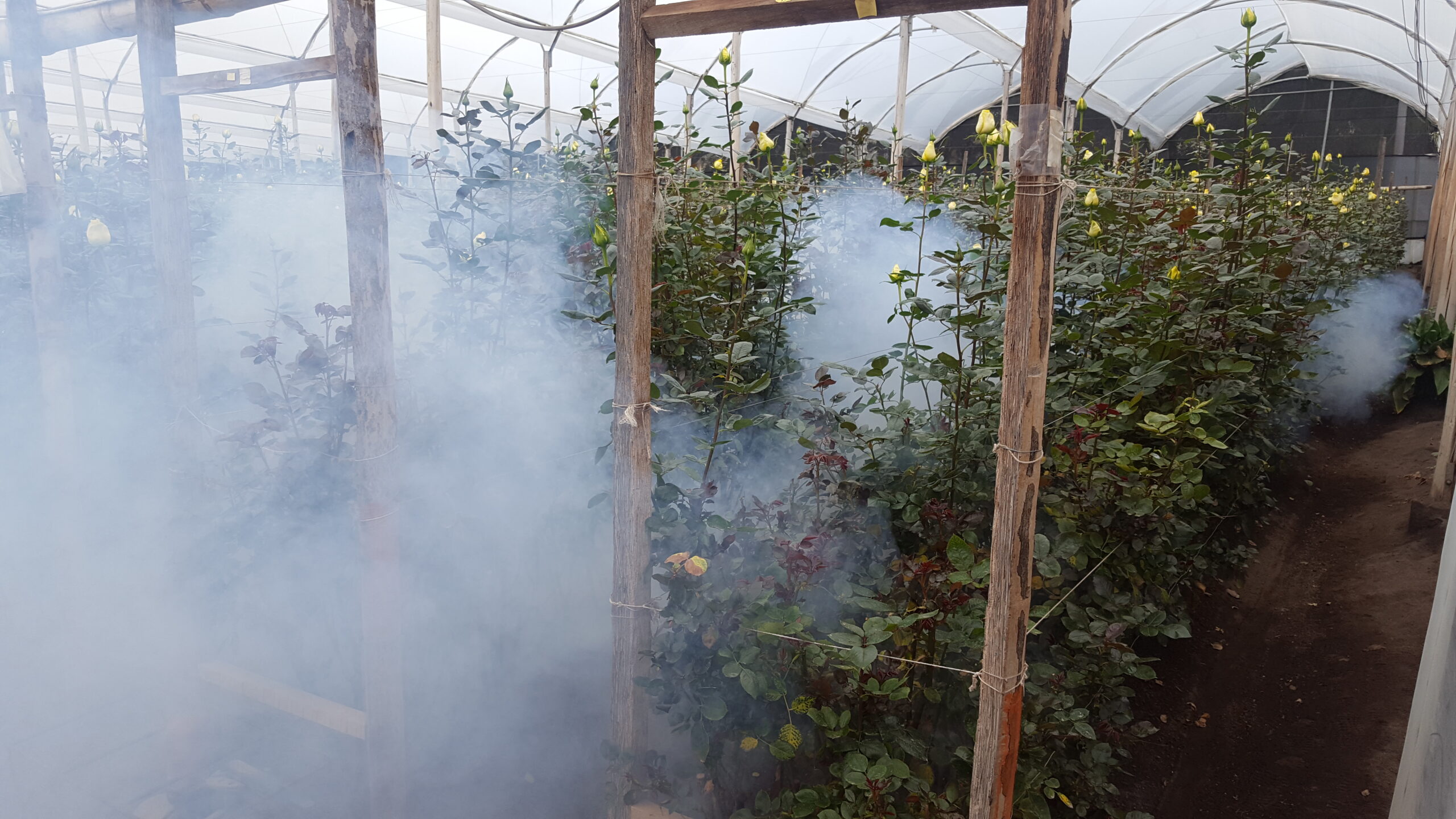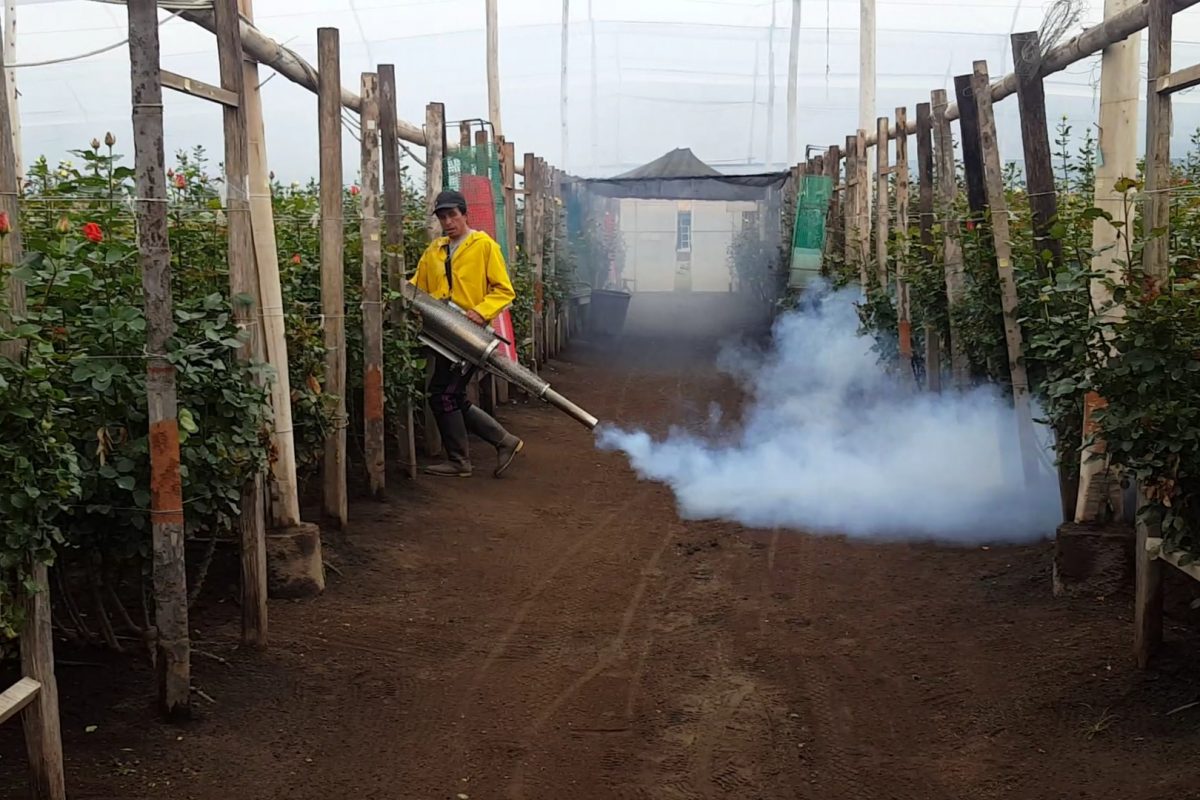Thermal fogging
Thermal fogging is a droplet micronization system, by means of thermo-pneumatic spraying, also known as an ultra-low volume application technique. It is important at this point to mention that thermo-pneumatic spraying is the supply of heat to a liquid substance that allows very small diameter droplets to be obtained, forming a kind of "fog".
This system has an optimal distribution of it and covers 98% of the application area, ensuring the protection of different areas of difficult access. Being an excellent equipment for disinfection of crops under greenhouse, post-harvest, warehouses, sheds, vehicles, etc.
Such is the case that this application technique is being used, with different active ingredients in flower or vegetable greenhouses, to disinfect and control Botrytis sp, Alternaria sp, Mildews, and other sporulating fungi, showing good effects in the intervention.
ADVANTAGE:
- High humidity conditions provide better results.
- Greater coverage in areas that are difficult to access due to cloud suspension.
- Reduces chemical deposits in flowers, fruits, stems or leaves since there is no penetration into the plant's vascular bundles.
- The speed of application allows to cover large areas in a short time.
- Low fuel consumption.
- Application equipment easy to maintain and operate.
- Water savings of 98%, avoiding contamination by runoff, dripping, washing tanks, tools.
- When a mist forms, it makes it possible to visualize the place where the product arrives and control or focus the application.
DISADVANTAGES:
- Wind may affect areas that are not part of the fumigation target.
- Thermal foggers are equipment that generate heat, the operator must be properly trained to avoid burns.
- Lack of knowledge of the management of this technology.
- Restriction in the application of certain chemicals (highly flammable) or growth inhibitors (herbicides).
- Application in unfavorable hours or weather, reduce the effectiveness of the application technique.




